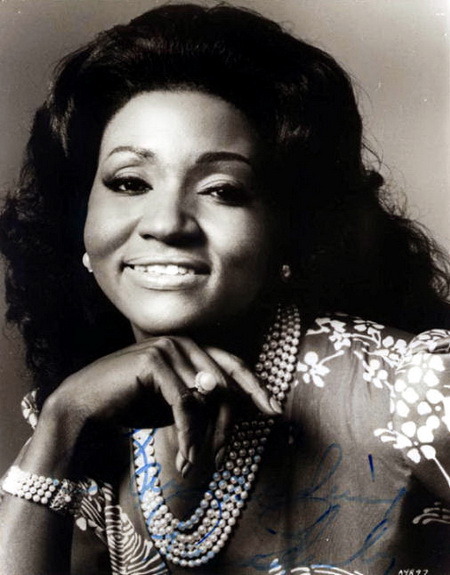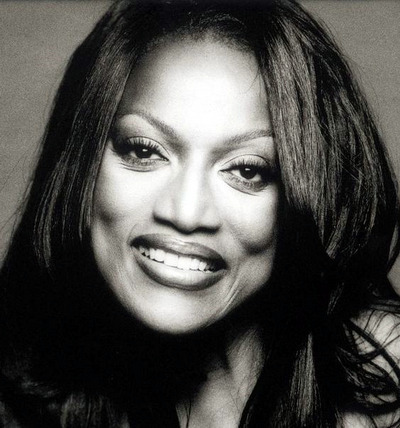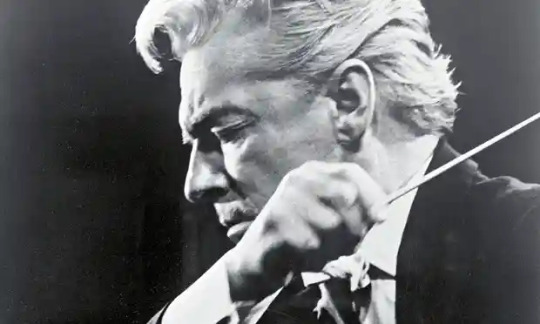#jessye norman
Text










Black History Month: Some of the greatest African-American opera divas of the 20th century: Marian Anderson, Leontyne Price, Shirley Verrett, Reri Grist, Grace Bumbry, Martina Arroyo, Jessye Norman, Kathleen Battle, Leona Mitchell and Maria Ewing.
#marian anderson#leontyne price#shirley verrett#reri grist#grace bumbry#martina arroyo#jessye norman#kathleen battle#leona mitchell#maria ewing#legendary#opera divas#opera icons
47 notes
·
View notes
Text
youtube
Remember me, but ah!
Forget my fate.
9 notes
·
View notes
Text

Still from "Diva" (1981), one of my favorite films.
6 notes
·
View notes
Video
youtube
Richard Strauss - Vier Letzte Lieder | Four Last Songs | Jessye Norman, Wolfgang Sawallisch
13 notes
·
View notes
Text

Inner Conquest
4 notes
·
View notes
Text
youtube
Kindertotenlieder (Songs of Dead Children), by Gustav Mahler. Soloist Jessye Norman.

18 notes
·
View notes
Video
youtube
Kathleen Battle & Jessye Norman sing "There is a Balm in Gilead" at Carnegie Hall
#jessye norman#kathleen battle#goodness this is lovely#wait for it#it starts out beautifully#and just gets better
16 notes
·
View notes
Text
happy birthday to one of the GREATEST OF ALL TIME
4 notes
·
View notes
Text
From now on I propose a revaluation pf Jessye Norman’s Carmen recording through a queer lens: being Norman a sapphic woman herself wouldn’t it have influenced (and maybe be the reason) of her choices of interpretation of this role - the unconventional phrasing and deliverance of some of the most known verses and melodies?
Jessye chose this project herself, she wasn’t put in it by mistake or in a hurry. She may not be able to control her colleagues - the singers and Ozawa- interpretations, but she had total control over her own role. Plus she looks like she is having a blast recording the role in that documentary that accompanies the CD, and is shown in that to really know what she wants from it.
I believe Mme. Norman was completely aware of what she was doing, the misunderstanding came from the public.
3 notes
·
View notes
Text
youtube
(via Henri Duparc - La vie antérieure (1884) - YouTube)
composed in 1884, orch. 1911–13
first published in 1902 dedicated to Monsieur J. Guy Ropartz
poem Charles Baudelaire (1821–1867)
Performers : Jessye Norman & Dalton Baldwin
9 notes
·
View notes
Text
youtube
"Samson et Delilah: Mon cœur s'ouvre a ta voix - Jessye Norman - Avery Fisher Hall - 1994 (HD)"
3 notes
·
View notes
Video
youtube
Jessye Norman - Four Last Songs of Strauss (Frühling, September, Beim Schlafengehen, Im Abendrot)
Some of the most beautiful musical pieces in the world
8 notes
·
View notes
Text
Karajan: a new film – and the controversy continues
Tom Service
The Guardian
London, UK
Thu 4 Dec 2014 @ 03:00 EST
The conductor – who led the Berlin Philharmonic from 1956 to 1989 – is the subject of a new BBC documentary. But he remains an enigmatic figure, whose musical approach sounds a false note in today’s world.

📸 Visionary? Conductor Herbert von Karajan in 1976. Photograph: Bettmann/Corbis
Herbert von Karajan. He’s both an icon and an enigma in the story of 20th century music. Baton aloft, hair expertly coiffed, shot in soft-focus lighting from the left (he insisted he was photographed from what he thought was his best side), he is the familiar face of millions of records, videos, laserdiscs, and now DVDs and downloads, the person who arguably did more to turn symphonic music into a commodity in the postwar era. He is also the despotic maestro of imperialistic ambition, who wanted to conquer every available media possibility and turn them into publicity-generating – and commercially lucrative – opportunities for him and his orchestra, the Berlin Philharmonic.
But Karajan the man remains elusive: a conductor who didn’t – and possibly couldn’t – form friendships with the musicians he led for more than 30 years, whose political past (he was a member of the Nazi party) was a dark halo over his reputation throughout his life, and whose music-making itself, for all its gigantic success, has now become a legacy that most of today’s conductors openly repudiate. Karajan’s approach, they say, represents an ideology in which the superficial gloss, finish and perfection of orchestral sonority is an end in itself, a one-size-fits all solution for repertoires from Bach to Berg, from Mozart to Mahler, which ironed out the expressive edges of everything he conducted. Simon Rattle, for one, has talked about how he was “slightly repelled” by the Karajan sound when he heard it in the flesh for the first time, and he’s just one conductor who feels that Karajan – “the emperor of legato” – belongs to a musical world that has no place in today’s orchestral culture.
It’s all of those myths, cliches, and phenomena that John Bridcut’s new film – Karajan’s Magic and Myth, broadcast on BBC4 on 5 December – interrogates, in the BBC’s first commissioned film on the conductor, 25 years after his death. There are some fascinating moments: interviews with musicians from the Philharmonia in London in the early 1950s, from the Berlin Phil, fellow conductors Nikolaus Harnoncourt (who played as a cellist for Karajan in the Vienna Symphony Orchestra) and Mark Elder, and a handful of the starry soloists he worked with in the later stages of his career, Placido Domingo, Anne-Sophie Mutter, and Jessye Norman.
Most illuminating of all are the glimpses you’re given of a man and musician who didn’t conform to the one-dimensional caricature he has become for some: far from a dead-eyed perfectionist, Karajan actually ignored obvious imperfections, such as a magnificently obdurate fluffed note from the fourth trumpet in one of his recordings of Strauss’s Alpine Symphony, in favour of the overall sweep of a longer take in the studio – or possibly because it was cheaper not to patch it up.
Karajan’s undoubted vanity comes over as one of the strongest indictments of his personality: not just the whole left-side-is-my-best-side thing, but making sure that his principal flute James Galway wasn’t visible in his films, because Karajan didn’t like Galway’s facial hair. Conversely, he didn’t like baldness either in himself or his orchestral players, and he made follicly challenged musicians wear wigs for the filmed sessions – even if they were often invisible since the camera focused for the vast majority of the time on Karajan and his closed-eye conducting, and on the instruments rather than the actual players.
But the biggest issue of all, the question of how Karajan actually produced the performances he did, remains unanswered in Bridcut’s film, as it does in the other Karajan documentaries that have been made. There are the crazy facts of his contract with the Berliners – that they were to be at his beck and call around the clock whenever he was in Berlin, summonable at a moment’s notice for a recording, rehearsal, or film session – but even accounting for Karajan’s famed magnetism and charisma on the podium, it’s hard to completely understand how he was able to command such complete authority over his musicians and orchestral culture all over the world.
It’s possible that Karajan is a phenomenon that today’s musical culture just couldn’t tolerate (although the fetishisation of the conductor figure continues unabated; just think of the adulation, marketing and hype around Gustavo Dudamel, for example), but the other side of it is the sheer scale of Karajan’s achievement. In rejecting Karajan’s recordings, we risk underestimating both the sheer intensity and indelible power of the sound world he created, and the sophistication of what he was doing musically. He also made visionary use of the latest media.
A few examples: watch his films with Henri-Georges Clouzot, rehearsing and performing Schumann’s Fourth Symphony and Beethoven’s Fifth. Karajan and Clouzot turn the art of orchestral rehearsal and music analysis into sensual filmic experiences. Of course, Karajan is performing for the cameras, but the substance of what he is saying when he tutors the hapless student conductor is rivetingly insightful, as is his forensic, multi-dimensional explosion of the start of Schumann 4.
These are suggestions (and there are others in the surprising amount of Karajan rehearsal footage on YouTube) of an essential approach to music-making, a way of building an orchestral score and a symphonic sound world from the bottom up, so that the symphony or opera or tone poem is generated from the basics – and the bass lines – of its harmonic momentum.
Karajan seemed to feel each piece he conducted as a single sweep of musical momentum made up of interconnecting lines of melody and harmony. His closed eyes, by the way, aren’t only about a mystical communion with an internal world of the music (and an incomprehensible mode of communication for Simon Rattle, and most other conductors), but a way of recalling the score, which, it’s said, he could see in his mind’s eye, turning the pages in his imagination. He had to keep them shut, otherwise he would lose his concentration.
But it’s his physical gestures that really tell this story of what he’s doing. So often, Karajan is reaching down with his hands, moulding and kneading a kind of sonic plasma that seems to begin somewhere beneath his podium, in the bowels of the earth – or at least with the Berlin Phil’s double bass players – and emerges upwards with volcanic force. That’s why his Bruckner, his Brahms, his Sibelius, his Wagner is so thrillingly powerful, because the music seems to be made of elemental energy, not simply orchestral sonority.
Well, that’s how it seems to me when Karajan is at his best – you can hear that too, in Karajan’s essential years with the Philharmonia in the 1940s and 50s; the Beethoven cycle they made together is arguably the most exciting of all his Beethovenian surveys. And it’s worth remembering how radical Karajan’s experiments with music and film were: yes, the fixed rows of musicians seem uncomfortably like a musical-modernist version of a Riefenstahl-like sense of order and abstraction, but they are achieved with a remarkable sense of filmic possibility, and with the essential idea that classical music on film should not simply be a filmed version of concerts, but a new medium, a new kind of experience.
The best of all is a film that Karajan didn’t like, directed not by the maestro himself but by Hugo Niebeling. It’s a version of Beethoven’s Pastoral Symphony, made in 1968, in which the cinematography is as powerful an interpretation of the piece as the performance, so that you feel the storm and the stream, the architecture and the physicality of Beethoven’s music with your eyes as well as your ears. Forty-six years after it was made, it’s a film that is infinitely more radical than the vast majority of classical music films made today.
A quarter century on from his death, Karajan remains a seismic figure in classical music, and even in a film of the range of Bridcut’s, the man himself remains hard to fathom. But as a new generation of listeners discover his legacy, especially in China and Japan, where his records still sell as the acme of classical music, he’s an unavoidable presence. In the questions that his life and music-making pose, you might not like him, but you have to deal with him. The Karajan controversy continues.
Karajan’s Magic and Myth is on BBC4 at 730pm on Friday 5 December, and then on iPlayer until 4 January.
#Herbert von Karajan#Berlin Philharmonic#Jessye Norman#Gustavo Dudamel#Placido Domingo#Anne-Sophie Mutter#Henri-Georges Clouzot#Hugo Niebeling#Bruckner#Brahms#Sibelius#Wagner
3 notes
·
View notes
Text
Sound on folx
1 note
·
View note
Text
was today years old when i learned this existed and my life has greatly improved for it
#opera tag#opera#le nozze di figaro#the marriage of figaro#canzonetta sull’aria#mozart#wolfgang amadeus mozart#mirella freni#jessye norman#sopranos#divas
6 notes
·
View notes